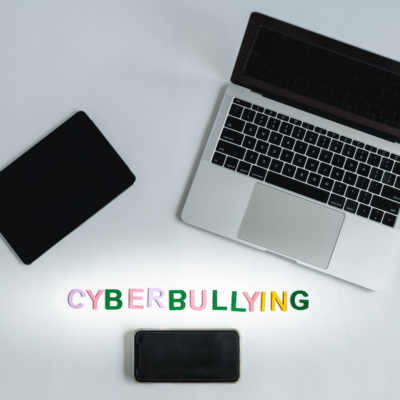Online crimes are increasing in frequency and severity with the continued growth of social media platforms and usage. In 2019, statistics showed that one out of every four teenagers from the age of 12 to 17 said that they had experienced cyberbullying the year before.
Cyberbullying is when a victim experiences online actions that lead to (or are in nature) harassment, threats, embarrassment, humiliation, or torment. Whether it happens once or often, this is cyberbullying.
The most common form of cyberbullying was via text messages or online messages. Having lies or hurtful messages shared online is also a common form of bullying, and many kids have unfortunately also experienced the sharing of explicit or compromising images. Now, with the growth of artificial intelligence (AI), compromising images that look extremely real can even be generated and widely distributed, as well.

Things have to change to improve the safety of others and to ensure proper consequences for those perpetrating cyberbullying. Keep reading to learn about some of the changes that have happened and are ongoing, as well as what you can do (especially in the case of minors).
Laws, Bylaws, and Programs
Improvements are slowly being implemented to deal with this growing problem. As social media platforms continue to change and rapidly developing technology changes from day to day, these changes will unfortunately take time (and require frequent revisiting).
However, there are some positive things taking shape to help protect from cybercrime, especially for minors.
One change, for example, can be seen in what the provincial government in British Columbia has done. BC became the ninth province in Canada to establish an act to help remove private images from the internet. This act is called the Intimate Images Protection Act, or IIAP. In Alberta, we have the Protecting Victims of Non-Consensual Distribution of Intimate Images Act.

With these acts, victims can get photos, videos, and other private images removed, usually also including AI generated images. Compensation is often also a possibility. In the Alberta act, for example, remedies can include:
- General, special, aggravated, or punitive damages
- The defendant (the accused) having to pay back the plaintiff (the victim) any profits that were made through the distribution of these images
And whichever other order or remedy the court decides is fair and appropriate in each specific situation.
BC also had every school in the province introduce new policies that restrict the use of cellphones at school, in an effort to reduce this type of bullying and crime.
Prevention
There are some things that statistics have shown can potentially reduce the likelihood of your child becoming a victim of online crime.
Here are some things that have shown to have an impact on cybercrime and cyberbullying:
- The risk of cyberbullying goes up for kids who use their phones or are online right before they go to bed, and first thing in the morning
- Social media usage overall leads to an increased risk of cyberbullying and other online victimization, poor sleep, and other distractions
- Supporting teens in their friendships has a considerable impact, as many victims of online crime also struggle with making friends
- For girls, monitor their male connections (including adult family friends) closely; most female victims are targeted by males they know
- Be aware of what your child is doing online. Kids whose parents are unaware or ill informed about their child’s online activities are at greatly increased risk of becoming victims
- Believe it or not, it is statistically proven that kids who eat dinner together with their families and who do not use their phones at mealtime, are less likely to become targets
What to Do if a Crime Has Happened
Depending on the province you live in, reporting an online crime can vary slightly. However, there are also over-all, Canada-wide resources and action steps available for these situations.

In Alberta, the Education Act helps to shed some light on the details of what cyberbullying is and how it is dealt with. Something that is worth highlighting regarding Alberta’s Education Act, is that cyberbullying actually must be reported. If students witness somebody being cyberbullied and do not report the matter, potential consequences include suspension or even expulsion.
There are several possible ways to report cyberbullying. These include:
- Calling 911 if the crime is ongoing and someone may be in danger
- Visiting the Government of Canada page with contact information and resources regarding cyberbullying
- Calling your local police or RCMP
- Contacting a lawyer
Help is Available
If you are a parent or guardian of underaged children, there are resources to help you learn about online crimes and how to take practical steps to keep your child safe.
The Government of Canada website has a lot of information on the subject, as does bekindonline.com. These are just two of many resources to get you started.
If you have any other questions or concerns, please don’t hesitate to reach out to us at McGuiness Law. Even if we can’t help you with your specific scenario, we have a network of professionals which we can potentially refer you to. You are not alone!